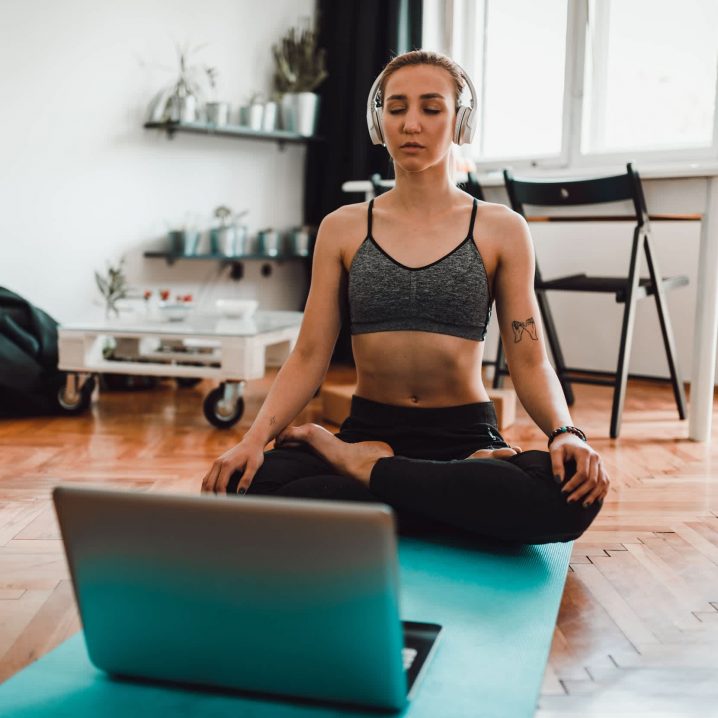
- POPSUGAR Australia
- Fitness
- 5 Expert Tips For Preventing Injuries During Your At-Home Yoga Practice
5 Expert Tips For Preventing Injuries During Your At-Home Yoga Practice

Just because an exercise is labeled as low-impact, gentle, or joint-loving, it doesn’t mean you can’t get hurt – especially now that many of us are working out in our homes without in-person instruction.
Take yoga, for example. Ignoring your body’s cues or tackling an advanced pose a little too soon could leave you couch bound with an injury to boot.
To help you flow through your practice free of stress (and pain), we reached out to a certified yoga instructor for advice on how to prevent common injuries during yoga.
Listen to Your Body
Truthfully, this goes for any method of exercise, but it’s particularly important when approaching yoga poses – whether it’s a brand new pose or one you’ve practiced for years.
“If something doesn’t feel right, do not do it or force anything to have it look a certain way,” Bethany Lyons, a certified yoga instructor and the founder of Lyons Den Power Yoga, says.
Your Crow pose doesn’t have to look like your instructor’s, and you might not feel up to a headstand just yet – your body will tell you what it needs. “Let your body – not ego – be your guide!” Lyons urges.
Related: 30-Minute Power Yoga Flow For Tight Abs and a Toned Butt
Use Your Breath
This tip goes along with listening to your body. “Use your breath as a gauge for how deep you go into a pose,” Lyons says. “When the breath becomes thwarted or constrained, your body is usually telling you it is too much.”
Find Your Favorite Teacher
This might take some trial and error, but thanks to the abundance of yoga streaming platforms and studios, like Lyons Den, that are now offering digital packages, you are bound to find an instructor that works for you. To prevent injury, Lyons recommends a teacher that gives point-to-point cues that are action oriented.
Related: All the Reasons I Am Grateful For Yoga
Keep Props Nearby
“I use a block every time I practice because it helps to tailor the practice to my body instead of forcing my hand to the floor in poses where my body doesn’t really need to go there,” Lyons says.
See? Even yoga instructors rely on their props, so don’t hesitate to break out your yoga blocks and straps after rolling out your mat.
Practice Proper Muscle Engagement
Lyons says that she finds that more injuries result from lack of muscle engagement, “sitting in joints, or overuse, rather than poor form.” “Of course, a practitioner can get hurt doing a handstand, headstand, etc., and falling, but more frequently, it will be something like ‘yoga butt,’ where the tendon at the high point of the hamstring gets irritated due to overuse. Or the wrists [can get] irritated due to ‘sitting in the joints’ instead of pressing into the floor and engaging the upper arms in Downward Facing Dog, High Plank, and Low Plank.”
A skilled instructor should call out parts of the body to pay attention to so that you’re better able to self correct.
Click here for more health and wellness stories, tips, and news.

